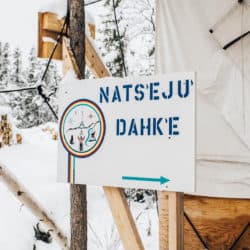In 2019, the Metcalf Foundation collaborated with The Philanthropist to curate a series on the public value of arts and culture in Canada. Now, in the midst of the pandemic, there is a new urgency to the challenges facing the arts.
A little more than a year ago, the Metcalf Foundation collaborated with The Philanthropist to curate a series on the public value of arts and culture in Canada. At that time, we were keen to highlight artists’ voices and illuminate the potency and variety of the arts’ contributions to Canada. As long-time cultural funders, we also wanted to highlight the crucial role philanthropy could play both in augmenting remarkable work and in meeting pressing needs within the arts community.
Now, in the midst of the pandemic, there is a new urgency to the challenges facing the arts. While everything raised in the original series remains germane, the issues that now afflict many arts organizations have become existential. If they survive, what form their survival takes, how their art, audiences, and people adapt and shift, and whether some of what went before must be left behind, are some of the wicked questions imposed by COVID-19.
When The Philanthropist’s editors reached out for someone to explore what the pandemic means for the cultural sector, we were quick to suggest David Maggs. Periodically, Metcalf invites a remarkable individual to take up an Innovation Fellowship at the Foundation. Last year, Maggs, artist, author, artistic director, academic, and broad-spectrum thinker became our latest Fellow. He began convening artists and practitioners across the country in a collective examination of the role and value of art in the 21st century. As you will see, in the face of COVID-19, Maggs challenges us to see opportunity within the damage – to put aside nostalgia for what is lost for excitement at what might be gained by art and artists finding new ways to connect their vital gifts and contributions to some of our transformed world’s most pressing needs.
Differing views
I come to the question of life after COVID-19 divided by differing professional activities. As a senior fellow with the Institute for Advanced Studies in Sustainability in Germany, I work within a sense of the pandemic as opportunity. Skies clearing? Orcas frolicking? Emissions dropping? Just how optimistic can we be?
As artist and arts-researcher in Canada, however, things have a different tone. Many of our cultural rituals were in decline before COVID-19. Now our cities are broke, our sponsors bled of cash, and older, art-consuming demographics are unlikely to take their seats anytime soon. If this tragedy needs comedy, consider that choral singing – surely the most wholesome activity in the Western world – is now dangerous? Granted, the arts feel doomed.
Which makes an obvious distinction painfully clear. Some folks want the world to change, others don’t. But is it not surprising to notice how much our cultural sector relies on stasis? On tastes, values, behaviours, and institutions remaining unchanged? Need this be so? Does a rich cultural sector imply a static one? Or have we backed ourselves into this corner unnecessarily?
Belief that we should avoid simply rebuilding the world has been expanding steadily as the pandemic wears on. Indeed, the status quo may prove a lonely place in years to come. Further, if ArtsJournal blogger Doug McLennan can be believed, it won’t have much to offer us, either: “Focus on rebuilding [and] we’ll get stuck with a lesser version of a model that already didn’t work very well.” In this case, the work to be done is not in wondering “if” we face a new and unfamiliar future, but how we might do so gracefully, and what we might be left with when we do.
Loss aversion
To the question of how we navigate the unfamiliar, it may serve to realize that humans have a surprising knack for clinging to worn out models of reality. One explanation for this is rooted in what behavioural economists call “loss aversion.” We humans, it turns out, dislike losing something we do have about twice as much as we enjoy finding something we don’t. The disappointment, in other words, at losing a dollar, finds corresponding satisfaction only in finding two.
Consider the Tale of Two Pizzas (Levin, et al. 2002). In this experiment, subjects were asked to build and pay for pizzas by either removing toppings from a full pizza (decreasing its cost) or adding toppings to an empty pizza (increasing its cost). Consistently, subjects who built their pizzas by removing toppings ended up paying more than those who built them by adding. We spend more, to let go of less (hence the efficacy of moneyback guarantees and free trials).
In this regard, it appears that humans feel loss inside a moment of change more acutely than gain. In pre-COVID times, perhaps this makes sense. In the world to come, it could spell disaster, producing poor decision-making, fanning uproar where none belongs, and offering silence where there should be cries of hope.
We might imagine it like volume settings in our brains, where receptivity is low, and resistance is cranked. The more these existing pathways just feel better, the more we are left caged inside a perpetual crisis of faith, a structural disbelief in better worlds to come. Readiness, then, might come as a challenge to counter this lens of loss aversion such that we bear better witness to the worlds we do need, and less nostalgia for the ones we don’t.
Art, a.v.
If countering – or even being aware of – loss aversion helps with the “how” of our uncertain futures, what about the “what?” In contemplating post-COVID cultural life in Canada, where do we begin? What do we let go of? What do we hang on to at all cost? What is baby, and what is bathwater in this moment of reckoning? What follows are seven questions our sector might consider in order to stand tall in the public imaginations of tomorrow.
What art is good? Or what good is art?
Amidst the stability of the past century, artists got to play around with the easy problem: what art is good? Riven with change, however, we must now contend with the much harder problem: what good is art?
While research demonstrates art’s benefit to an array of social goods – public health, poverty reduction, education, sustainability, immigration, leadership, etc. – here, two difficulties arise. First, much of this research can apply to bowling or other drivers of social capital. So why fund art if bowling is free? Second, the lure of proving art’s worth beyond its aesthetic preoccupation jeopardizes art’s central value.
To this, a layered response is useful. First, can we shift impact analysis closer to home instead of chasing non-aesthetic benefits (art to boost math skills or carpooling)? Second, can we allow values and impacts to differentiate across components of our “ecosystem,” i.e. how do funders need to think about impact, distinct from institutions, presenters, or makers of art? Third, once differentiated, can we reintegrate this texture and nuance into a complementary coherence? With luck, this allows varied elements of the sector to play to their strengths while feeding back into a resounding, coordinated response to a question that is only going to get louder: what good is art?
Develop our audience or develop our art?
There is a dilemma buried in the art-society relationship: develop the audience or develop the art? Surprisingly, many practices choose the former. Consider classical music. Here, we respond to audience decline overwhelmingly through “audience development,” e.g. pre-concert talks, program notes, and other educational efforts augmenting standard presentations. The assumption? The art is fine, fix the audience.
What if audiences are fine? What if they aren’t watching Netflix with some inchoate longing for opera or art nouveau? If there is no deficit to appeal to, there is no future in “educating” them into coming back. We either renew purchase on the public imagination or stop taking public money.
To do so, however, requires genuine experimentation. A creative inquiry bursting with risk and enthusiasm as it pursues unrecognizable futures for both art and audience. What to make, then, of orchestras playing along to Star Wars or Harry Potter with click tracks in their ears, six times per season? Is this experimenting with the future of classical music? Or is it a pitstop to grab cash before pulling back onto the old roads of continuing decline?
Is this an ecosystem or a zoo?
Grant applications always ask us to identify our roles within “cultural ecologies.” How comfortable are we with the metaphor? Crucial to healthy ecologies, of course, is death, decay, and renewal. Ecosystem management has learned the hard way that maintaining apex species beyond competitive viability creates brittle systems, lacking in resilience.
What would a genuine cultural ecosystem look like? Would it favour legacy clients with government relations officers lobbying caretakers to water and feed in their favour? Is that good for art in Canada? Or did that help embed the crisis of legitimacy the sector now faces? Are we better served by more honest ecological reckonings?
Consider our classical music example. Here the need for genuine experimentation driven by authentic creative inquiry is urgent. What impedes this? Large, costly, risk-averse legacy clients – apex species – dominating the resources and keeping more nimble, experimental species from gaining a toehold and scaling their successes. As care and feeding pour resources into isolated and often ailing megafauna (belugas, elephants, and orchestras), the genuine ecosystem (rats, pigeons, and genuine experimentation) are left scrounging beneath the legs of protected attractions. More often than not, we aren’t cultivating an ecology, we’re running a zoo.
Art and the apocalypse?
Climate change is widely understood to represent an existential threat, yet its framing as “global problem” needing a “global solution” leaves little room for emergent, culturally-specific responses that engage the crisis at the level of identity, meaning, and purpose – key drivers of how we act in the world. While art is increasingly engaged in climate action, climate perspectives rarely possess a sophisticated grasp of the agency of art, and artists rarely engage deeper aesthetic opportunities within climate. The typical exchange is technical, prescriptive, and instrumental. Can we deepen the relationship by clarifying more distinct, purposeful modes of engagement?
“Greening the sector” involves carbon accounting associated with artistic activity, a mode as vital to tourism as art. Here, art is on the receiving end of climate imperatives, with expertise lying in engineering, energy efficiency, and life-cycle assessment. The basic intent is measuring and minimizing carbon footprints associated with our activity.
“Raising the profile” identifies art engaging climate with the aim of awareness and behaviour change. Content typically features cross-disciplinary exchanges, where scientific outputs are communicated through art: sea-level rise, glacial melt, desertification, refugees, extreme weather. A lot of climate art fits here, leaving art still receiving the substance of climate imperatives, while asking it to increase concern and responsiveness.
“Reauthoring the world” identifies a more nascent category. Beyond adopting engineering solutions or aestheticizing scientific outputs, global climate action needs art to shape new existential and metaphysical horizons of post-carbon futures through open aesthetic inquiry. Here artistic processes reframe climate discourse away from scientific imperatives, turning to art to explore meanings, identities, and purposes beyond carbon economies. Here, the goal is not to inspire and support climate art that carries “the message” to diverse communities, but to embolden communities to find their own climate visions through the aesthetic.
Does art compute?
The digital future is here, and just as disruptive for art as other aspects of life. Artists appear to navigate the disruption in four ways: use technology to make art, use art to make technology, use art to make sense of technology, and use technology to keep art practices current and visible. With support from the Canada Council’s Digital Strategy Fund, Banff Centre’s recent digital summit unearthed several themes cutting across these modes of engagement.
First, emerging technologies require curiosities that defy art’s traditional working models and disciplinary specialities. In response to the complexity of new possibilities, deep, emergent collaborations give rise to relevant skills, knowledge, and working models that replace the static forms of many artistic processes. As Milieux Institute director Bart Simon refers to it, this “post-disciplinary engagement” implies major shifts in policy, funding, forms, training, and skills.
Second, data generation, sharing, and analysis create opportunities for the sector to work together for the betterment of artists, society, and the economy. Frédéric Julien and Akoulina Connell have been instrumental in exploring a data future for the sector that is linked and open. Can we standardize how we represent various elements of art-making such that we can register the richness of our sector online in consistent, open, and accessible ways? Can we link this data into a coherent picture of Canada’s cultural diversity? While big data may be frightening, abstaining from a coordinated, open online representation entails a vanishing act we would be foolish to perform.
Finally, the digital disruption is inherently paradoxical, both inviting unprecedented access – linking individuals and communities across a globally connected world – while amplifying patterns of exclusion. Anti-oppression and anti-racism frameworks have to guide our thinking and actions to ensure that digital policies, governance, infrastructure, processes, opportunities, and technologies build fair, accessible, and equitable frameworks.
Can we live together?
Which leads to an urgent consideration: equity – with its Canadian emphases on diversity and indigenization. As a straight, white, middle class male steeped in Western cultural and intellectual traditions, I am not here to shape equity narratives. Nor do I include it to seem morally current – I am clumsy in this at the best of times. I raise it because, as colleague Shannon Litzenberger says, if we believe artists are world-makers, and that art is an engine of being, what question is more important to ask in this moment than, “Can we live together?”
Of all the recent victories for the far-right, one of the more consequential may be the coaxing of the left off its liberalism. In this, it appears to have drawn the left into a street fight where tactics and strategies mirror one another: peddling hatred and anger, spreading shame, creating scapegoats, raising strawmen and bogeymen with equal panache, and sharing an increasingly symmetrical intolerance. As Simon Fraser University professor Steven Lewis put it recently: “The attempt to limit debate and the vilification of the debater is yet more worrisome evidence of the problematic culture among too many on my side of the political spectrum . . . Enough scolding, enough censorship, enough dogma and enough beating up on good people.”
For unlike the far-right, the left has something to lose here. Liberalism, measured in terms of its fundamental commitment to accept, respect, and live alongside views different from our own, is surely inherent in what diversity represents, entails, and requires? Seeing this basic commitment wither in the public sphere, and within the political discourse of Canada’s cultural sector, is of concern.
In trying to clarify and accelerate the virtues and values of diversity, we as a sector might do well to expand our rhetoric and approach, building onto the basic moral foundation an added realization of opportunity: within contemporary problem spaces, functional intelligence requires difference. Our relationship to diversity, indigeneity, and equity isn’t simply a moral imperative; it’s a strategic advantage. Not just right, better.
What are we doing here, anyway?
In the wake of recent months, the pressure on our sector could hardly be greater. If art is a public good, we better prove it. Yet asked if such “public good” is rooted in artistic value or social value, we had better say “social” or be laughed out of the room. Does this mean we have finally found what art is for? Or does it mean we have finally lost sight of it completely? How did such a fundamental question creep up on us without our noticing? What are we doing here?
While we never mind insisting that art can change the world, we get fuzzy when pressed on the details of how. In pursuing “usefulness,” the past decades have witnessed an increasing instrumentalization of art, one which, in most instances, falls short of our transformative aspirations. Perhaps, in an age of “utility” and “impacts,” the more radical vision is not the instrumentalization of art, but the aestheticization of the world. One fashions art into a tool to register value in the rationality of its time. The other begins to uproot that rationality, as dazzling alternatives go to seed in the dreams of its constituents.
In pursuit of this latter option, art, after virus, must strive to reconcile its diverging imperatives. The uncertainty of our collective futures requires that we first, allow ourselves to be transformed by the social urgencies of our time. Simultaneously, however, it is vital that we stay rooted in the integrity of our artistic processes and passions. To miss the first, is to convince no one but ourselves of our profound value. To miss the second, however, is to arrive at the struggle for better worlds with not much of anything to offer. To borrow somewhat loosely from Yogi Berra on the occasion, when we come to a paradox in the road, take it.
The charitable sector is responding rapidly to the expanding impact of the pandemic, in terms of outreach, operations, and advocacy. Over the past weeks, The Philanthropist has provided up-to-date coverage, as well as our usual reporting and commentary on other news of relevance to foundations, charities, and non-profits. Read more of our COVID-19 coverage.


